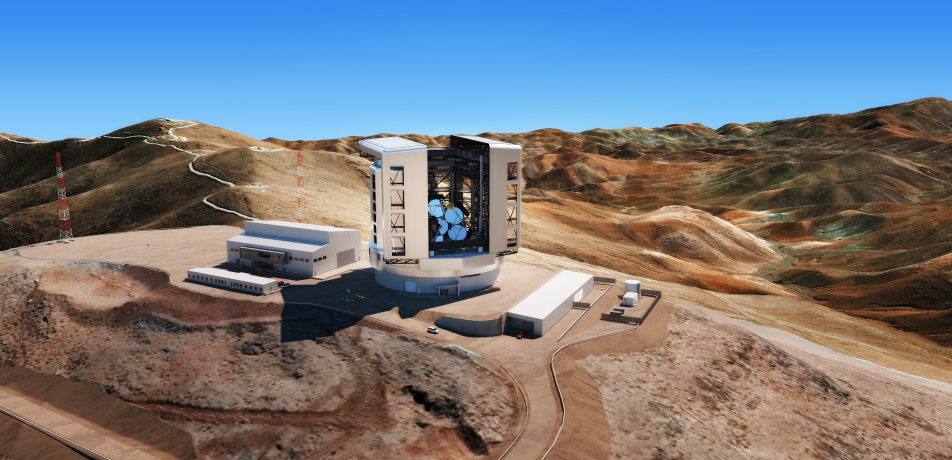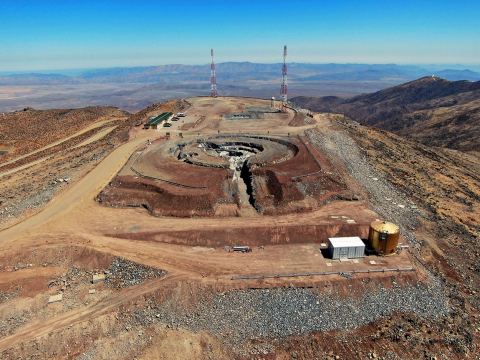Weizmann joins Giant Magellan Telescope consortium
Briefs

Rendering of the future telescope. Credit: Giant Magellan Telescope Organization
The Giant Magellan Telescope (GMT), an observatory now under construction that will be the most sensitive ground-based telescope ever built, is being designed and erected by a consortium of the world’s top astrophysics experts in 13 top-flight institutions around the world. The consortium just gained an important new partner: the Weizmann Institute of Science.
Membership will enable Weizmann physicists involved in the Frontiers of the Universe flagship project to contribute to its planning and benefit from the data that will stream in from the project. The Giant Magellan Telescope will gather high-resolution images that are expected to revolutionize the way we understand the universe and our place in it.

The ground being prepared for the GMT installation. Credit: GMTO
“By joining this consoritum, Weizmann scientists have earned a place at the forefront of mankind’s capabilities in astrophysics,” says Prof. Avishay Gal-Yam, head of the Institute’s experimental astrophysics group. “It will allow us to accelerate our own observatory capabilities and develop next-generation instruments that will advance the field of astrophysics worldwide.”
“The addition of the Weizmann Institute of Science is a giant win for our international consortium,” says Dr. Walter Massey, board chair of the Giant Magellan Telescope Corporation and former director of the National Science Foundation. “We just became stronger and more capable. Weizmann expertise is mission critical for pointing the world’s largest mirrors toward the heavens and unlocking its many cosmic secrets.”
Construction of the telescope is underway at the southern edge of Chile’s Atacama Desert, where it is expected to begin operation in 2029. Capable of seeing billions of light-years into the Universe, its extraordinary image clarity will enable scientists around the globe to obtain new clues to the fundamental nature and evolution of the universe — and aid in the search for life on planets located beyond the borders of our Solar System.
— Sandy Cash








